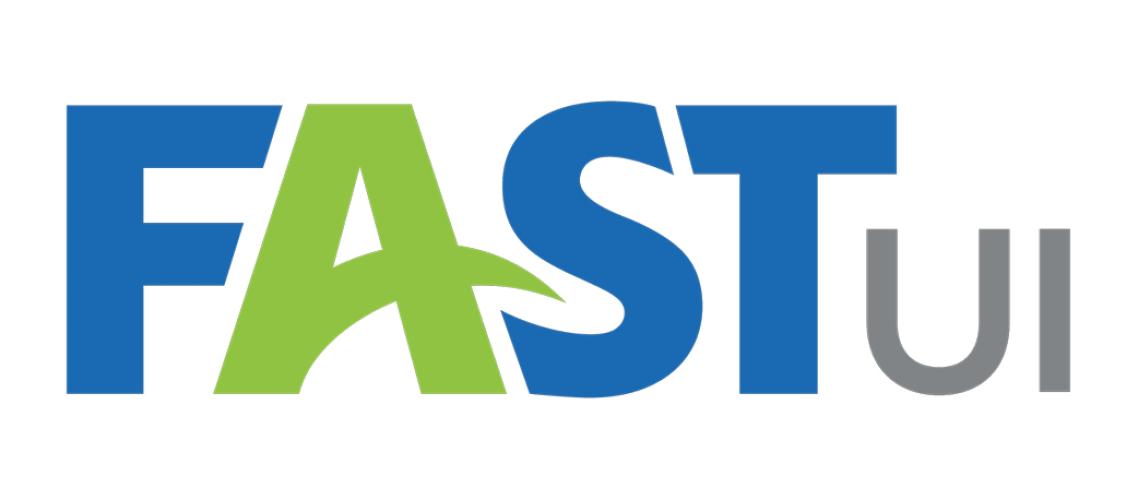NASWA Bulletin - January 9, 2015
In This Issue:
- 2015 NASWA Winter Policy Forum Registration Now Available!
- WIOA Notice of Proposed Rulemaking Delayed
- House Passes Veterans Employment Bill
- NASWA Releases Report on State Unemployment Insurance Financing Systems
- 114th Congress Officially Opens
- House Passes Resolution to Adopt Rules for 114th Congress
- U.S. Economy Added 252,000 Jobs in December; Unemployment Rate at 5.6 Percent
- Lamar Alexander Elected as HELP Committee Chair; Senator Patty Murray Elected as Ranking Member
- President Proposes Community Colleges Reform
- UI Learning Center Launches a UI IT Security Course on "Access Control"
- Treasury Offset Program Collected $371 Million
- Unemployment Insurance Initial Claims Decrease, Continued Claims Increase
- Notices, Advisories and Reports
2015 NASWA Winter Policy Forum Registration Now Available!
Online registration and hotel reservations are now available for the upcoming 2015 NASWA Winter Policy Forum held in Washington, D.C., February 19-20, 2015 at the Hyatt Regency on Capitol Hill.
NASWA’s annual Winter Policy Forum serves as the premier NASWA event for state workforce agency administrators and other workforce agency professionals to hear and discuss current economic conditions in the U.S. with national experts, discuss implementation of the Workforce Innovation and Opportunity Act (WIOA), and learn about the legislative outlook in the new 114th Congress. NASWA's Board of Directors will meet on Wednesday, February 18, 2015 at the Hyatt Regency Washington on Capitol Hill prior to the Winter Policy Forum.
A block of rooms for the 2015 NASWA Winter Policy Forum has been reserved at the Hyatt Regency Washington on Capitol Hill at the government rate of $177 for a standard room. Hotel reservations can be booked online or via telephone by calling (202)737-1234. When calling, please identify yourself as a member of NASWA Winter Policy Forum for the room block rate. The government rate is available 3 days pre and post of the meeting dates based on hotel availability. Reservations must be made by Tuesday, January 27, 2015.
For additional information on the Conference Agenda, Registration and other Conference items, please visit http://www.naswa.org/meetings/wpf2015/.
WIOA Notice of Proposed Rulemaking Delayed
As reported earlier this week, the U.S. Department of Labor has released notification indicating the WIOA Notice of Proposed Rulemaking (NPRM) will be published in spring 2015, rather than January 18, 2015, as stipulated in the law. Upon receiving public comments, the final rules are now anticipated in early 2016.
Because many provisions of WIOA go into effect July 1, 2015, the Department of Labor’s Employment and Training administration (ETA) also will issue operating guidance in spring 2015 to support implementation. In addition, ETA intends to issue targeted guidance documents in the spring, accompanied by technical assistance activities. Once issued, the guidance can be accessed at www.doleta.gov/WIOA/
NASWA has been in discussions about this delay with ETA leadership and WIOA implementation will be discussed at length during NASWA’s Winter Policy Meeting.
House Passes Veterans Employment Bill
On Wednesday the House of Representatives passed the Hire More Heroes Act (H.R. 22), a bill intended to encourage small businesses to hire more veterans. The bill passed 412–0 under suspension of the rules. It amends the Affordable Care Act to exclude employees such as veterans with health care coverage through TRICARE or other programs administered by the Departments of Defense or Veterans Affairs from counting toward the health care law's employer mandate. The mandate, which includes businesses with 100 or more full-time employees, took effect on January 1 and will expand to smaller businesses with 50 or more employees in 2016. The House passed similar legislation (H.R. 3474) during the last Congress with a vote of 406–1, but the bill stalled upon reaching the Senate. Senator Roy Blunt (R-MO) introduced a companion bill in the Senate, but no timeline has been given for floor consideration.
NASWA Releases Report on State Unemployment Insurance Financing Systems
NASWA completed its fifth annual survey of states on the status of their unemployment insurance (UI) financing systems entitled NASWA Unemployment Insurance Tax Survey 2014. Originally intended to determine the amount and type of modifications to state UI tax mechanisms, the survey has evolved over the last five years, continuing to track tax changes, but also tracking changes to weekly benefit payments, duration, eligibility, methods for employers to file UI taxes and alternative sources of funding for repayment of Title XII advances and interest on loan balances. To read the full report, click here.
Some of the key highlights from the report include:
- For the first time in the five years, a larger percentage of states indicated they expected UI tax revenue to decrease rather than increase. Twenty-four states (57 percent) reported their UI tax revenue would decrease in 2014.
- States that expected an increase of their UI tax revenue in 2014 projected an average increase of slightly more than one percent. States that expected a decrease in UI tax revenue projected an average decrease of 5.2 percent.
- States expecting UI tax revenue increases in 2014 cited economic growth and indexation of the state’s taxable wage base as the top two factors driving the increase.
- Fourteen states (34 percent) indicated tax schedules and surtaxes had reached their maximums under state law, with 27 states (66 percent) indicating they were not at their statutorily authorized maximums.
- Five states (12 percent) indicated legislation has been or will be proposed to address UI financing in 2014.
Eight of the nine states who responded to NASWA’s survey indicating they had a Title XII loan mentioned they were taking special actions to reduce or eliminate the FUTA offset credit reduction in 2014 by applying for waivers from the U.S. Department of Labor for the Benefit Cost Ration (BCR) add-on charge.
114th Congress Officially Opens
Tuesday, January 6th, marked the opening session of the 114th Congress and for the first time in eight years Republicans maintain a majority in both the House and the Senate. Senator Mitch McConnell (R-KY), previously Senate Minority Leader, was elected as the Senate Majority Leader and Senator Harry Reid (D-NV), previously the Senate Majority Leader, was elected as the Democratic Minority Leader. The complete leadership teams for both Republicans and Democrats can be accessed here.
In the House, Rep. John Boehner (R-OH) was also reelected to his post as Speaker of the House of Representatives, just as Rep. Nancy Pelosi (D-CA) was reelected for her third successive term as the Democratic Minority Leader in the House. Rep. Kevin McCarthy (R-CA) was elected the House Majority Leader and Rep. Steve Scalise (R-LA) was elected as the House Majority Whip. Rep. Steny Hoyer (D-MD) was elected Democratic Whip. The complete leadership teams for both Republicans and Democrats can be accessed here.
The profiles of each of the new members of the 114th Congress can be accessed here. Additionally, a finalized list of the Senate Committee Chairmen and Ranking Members in the 114th Congress can be found here.
House Passes Resolution to Adopt Rules for 114th Congress
On Tuesday, January 6, the U.S. House of Representatives approved the rules package, H. Res. 5, introduced by House Majority Leader Kevin McCarthy (R-CA), by a vote of 234-172. The approved rules add to previous procedural requirements approved by the Republican-led chamber in 2011 and 2013 that were designed to reduce regulatory burdens associated with newly-enacted legislation.
Some requirements in the resolution include:
- Regulatory Tally Requirement
The regulatory tally requirement, included in a section titled Disclosure of Directed Rulemakings, requires all committee reports or joint resolutions to include a statement estimating the number of federal rulemakings required by the legislation. Committees typically issue formal reports to accompany the legislation they approve, a document that acts as a formal record of how the legislation was developed and includes views from both the majority and minority party.
- Dynamic Budget Scoring Requirement
The rules package requires the use of dynamic scoring when bills have a large impact on spending, revenue or the budget deficit. It requires the Congressional Budget Office (CBO) and the Joint Committee on Taxation (JCT) to estimate changes in economic growth, employment, available capital and “other economic variables” for bills that would result in changes of more than one-quarter of a percentage point of gross domestic product in any fiscal year covered under the most recent budget resolution. The rule also allows the chairman of the Budget Committee and the chairman or vice chairman of the JCT to designate bills to be scored dynamically, even if they don't otherwise meet the dollar threshold.
The resolution affects only bills under consideration by the House. The Senate, also under Republican control for the first time since 2006, has yet to signal whether it will follow similar requirements.
U.S. Economy Added 252,000 Jobs in December; Unemployment Rate at 5.6 Percent
The Bureau of Labor Statistics reported today the total nonfarm payroll employment rose by 252,000 in December, and the unemployment rate declined by 0.2 percent to 5.6 percent. Job gains occurred in professional and business services, construction, food services and drinking places, health care, and manufacturing.
The report also incorporated revisions to nonfarm payroll employment for October and November resulting in an increase in employment of 50,000 jobs. Monthly job increases have averaged 289,000 over the past 3 months. In 2014, job growth averaged 246,000 per month, compared with 194,000 per month in 2013.
Analysts offered varying views on Friday’s report. On one hand, job growth and the lowest unemployment rate since June 2008 offer evidence of a healthy economy, possibly convincing the Fed that it is time to raise interest rates. Yet wage growth is stalling, which might give the Fed pause.
The news on job creation was tempered by a poor showing in average hourly earnings or wage growth, which fell 0.2 percent in December after rising 0.4 percent in November, based on the household survey. Many economists had thought the increase in November had signaled the start of a trend that wages were finally improving.
The household survey also showed the economy has not broken free from the lingering effects of the Great Recession, especially with respect to long-term unemployment (2.8 million). Millions of part time workers are still looking for full-time employment (6.8 million), while even more have been so discouraged (740,000) that they have either dropped out of the labor force or reluctantly accepted part-time work.
The share of men in their prime, working years who are not working has more than tripled since the 1960s. While the share of the work force put out of work for a relatively short time has returned to historical levels, long-term unemployment remains highly elevated, and nearly a third of those have not been able to find a job for more than two years.
Lamar Alexander Elected as HELP Committee Chair; Senator Patty Murray Elected as Ranking Member
Senator Lamar Alexander (R-TN) was formally elected yesterday to chair the Senate Committee on Health, Education, Labor and Pensions. This committee was instrumental, along with the House Education and Workforce Committee, in crafting the Workforce Innovation and Opportunity Act (WIOA).
Senator Alexander served as the HELP Committee's ranking Republican before the party took control of the chamber following the midterm elections. He has been a champion for the workforce system, and was instrumental in securing the 15 percent for the Governor’s reserve in WIOA. In announcing WIOA, he also remarked, “Last year the federal government spent more than $145 million in Tennessee through a maze of programs trying to help Tennesseans find work. Our legislation will simplify that maze, give governors and states more flexibility, and make it easier for Tennessee's 13 local workforce investment boards to match job seekers with the skills employers are looking for.”
Another principle author of WIOA, Senator Patty Murray (D-WA), will be the Ranking Member of the HELP Committee. Senator Murray has worked tirelessly over many years to reauthorize the Workforce Investment Act and when the compromise was agreed upon last year, she noted: “WIOA is bipartisan, bicameral legislation that will improve our nation’s workforce development system and help put Americans back to work. Now more than ever, effective education and workforce development opportunities are critical to a stronger middle class. We need a system that prepares workers for the 21st century workforce, while helping businesses find the skilled employees they need to compete and create jobs in America.”
(New Committee Chairs will be profiled in the next edition of Bulletin)
President Proposes Community Colleges Reform
Today, President Obama outlined a proposal in Knoxville, TN to make two years of community college free for students of any age with a C+ average who attend school at least half-time and who are making “steady progress” toward their degree.
The President’s proposal will have to be approved by Congress and does not have an official cost -- other than “significant,” according to White House officials. If all 50 states participate, the proposal could include up to 9 million students each year.
To be eligible, community colleges would have to offer academic programs that fully transfer credits to local public four-year colleges and universities or training programs with high graduation rates that lead to in-demand degrees and certificates. Community colleges must also adopt “promising and evidence-based institutional reforms” to improve student outcomes.
Federal funding would cover three-quarters of the average cost of community college, and the President is asking states to pick up the rest of the cost — assuming Congress agrees to the plan.
UI Learning Center Launches a UI IT Security Course on "Access Control"
The ITSC is launching a UI IT Security Training “track” with its first course, now available, on “Access Control” for Unemployment Insurance IT Systems. This course addresses the IT Security topic of Access Control in a UI system. Access Control, involves who can get on the system or gain access to data or activate functions or use services in an information technology world. This begins with determining exactly who the individual is who wants to use the system. This is typically the most problematic step, particularly in the case where people want to use the internet from the convenience of their home or their favorite hot-spot.
As part of registration some sort of password or other form of identification is set up to simplify future accesses. During registration you can also establish what you will be allowed to do whenever you return to the system. This course will provide an overview of the access control process at work in the area of Unemployment Insurance. Topics include the basic concepts of access control (Identification, Authentication, and Authorization) to some state examples of securing access to their UI systems and preventing unauthorized users.
The next course for the UI IT Security Training “track” will be on “Understanding and Dealing with Identity Theft in UI.”
For any comments or feedback with this course, please contact John Quichocho at jquichocho@naswa.org.
How to access this course?
For New Members to ITSC: If you do not have credentials to access ITSC’s website www.itsc.org, please contact Stephen.Hanle@itsc.org and request access to become an ITSC member.
For Current Members to ITSC: You will need to request access to the UI Learning Center via an online registration at https://members.itsc.org/sites/members/Pages/LMS-Registration.aspx. Once you are given access to the center, the Access Control course as well as other courses will be viewable under the “Learning Catalog.”
Treasury Offset Program Collected $371 Million
The U.S. Department of Treasury recently released its thirteenth newsletter on the Treasury Offset Program (TOP). The TOP initiative collects UI debt from federal income tax refunds due to fraud or a person’s failure to report wages while collecting unemployment benefits. For UI taxes, only unpaid employer unemployment taxes attributable to a sole proprietor or partners can be submitted for offset to the IRS.
At the end of September 2014, Treasury listed 42 states (AL, AR, AZ, CA, CO, CT, DC, DE, FL, GA, HI, IA, ID, IL, KY, LA, MD, ME, MI, MN, MS, MO, NC, ND, NE, NH, NJ, NM, NV, NY, OH, OR, PA, RI, SC, SD, TN, UT, VT, WA, WI, and WV) that have implemented UIC TOP with Treasury/IRS. Since its implementation in February of 2011, $860 million has been recovered to offset UI overpayments. In 2014, 42 states collected $370.7 million.
Last year, California, Ohio, New Mexico, Maine, and Rhode Island joined the other 37 states under the Unemployment Insurance Compensation program able to capture federal income tax returns for individuals with outstanding UI overpayments. For 2015, states will be able to refer UI tax debts to the TOP UIC program. Treasury is planning a webinar for states later this month implementing UI tax debits.
For more information on UIC TOP, please visit http://fiscal.treasury.gov/fsservices/gov/debtColl/dms/top/uicDebt/debt_top_uic.htm.
Unemployment Insurance Initial Claims Decrease, Continued Claims Increase
The U.S. Department of Labor reported for the week ending January 3 seasonally adjusted unemployment insurance initial claims decreased from the previous week's revised figure.
Seasonally adjusted initial claims decreased by 4,000 to 294,000 from last week's revised figure of 298,000. The 4-week moving average was 290,500, a decrease of 250 from the previous week's unrevised average of 290,750. The unadjusted initial claims level totaled 425,399, increase 35,581 from the previous week, and down 63,138 from the level of 488,537 for a comparable week in 2014.
UI continued claims, seasonally adjusted, for the week ending December 27, 2014, were 2,452,000 up 101,000 from the previous week's revised figure. The 4-week moving average decreased 17,000 to 2,397,000 from the prior week's revised figure of 2,414,000.
The total number of individuals claiming benefits in all programs for the week ending December 20 was 2,405,601, a decrease of 135,432 from the prior week. Regular state continued claims decreased by 126,340, and EB decreased by 1. During the week of December 20, 2014, continued claims for ex-federal employees stood at 16,529 down 2,166 from the prior week, and for newly discharged veterans, 23,513 down 2,514 from the prior week.
Seasonally adjusted initial and continued claims continue to decline from highs reached during the Great Recession but the rate for initial claims is leveling off as shown in the chart below. Both series are below pre-recession levels at this time.
Notices, Advisories and Reports
USDOL Directives & Releases
January 06, 2015: ETA released Training and Employment Guidance Letter No. 17-14 notify National Emergency Grant (NEG) grantees of changes to the Employment and Training Administration's (ETA's) NEG modification process. These revised procedures are effective immediately.
December 31, 2014: ETA released Unemployment Insurance Program Letter No. 6-15 providing State Workforce Agencies (SWAs) with advance notice of distribution of new Sun Server X4-2 computer systems.
December 29, 2014: ETA released Unemployment Insurance Program Letter No. 5-15 transmitting the subject computation for State Workforce Agency usage in computing minimum weekly DUA amounts for all major disasters declared during the second quarter of Fiscal Year (FY) 2015.
December 23, 2014: ETA issued Training and Employment Notice No. 16-14 requesting that state workforce agencies assist in disseminating information to employers about changes in OSHA reporting requirements.
December 23, 2014: ETA released Training and Employment Guidance Letter No. 16-14 providing State Workforce Agencies or agencies designated by Governors as "Cooperating State Agencies" (CSAs or "states") with guidance to continue the TAA and ATAA and RTAA programs (collectively referred to as the TAA program) through the fiscal year ending on September 30, 2015 (FY 2015).
Bureau of Labor Statistics Reports
December 30, 2014: BLS released its monthly Metropolitan Area Employment and Unemployment Summary for the month of November 2014. According to the BLS report, Unemployment rates were lower in November than a year earlier in 341 of the 372 metropolitan areas, higher in 27 areas, and unchanged in 4 areas. The national unemployment rate in November was 5.5 percent, not seasonally adjusted, down from 6.6 percent a year earlier.
December 17, 2014: The Bureau of Labor Statistics released the November 2014 Real Earnings reporting real average hourly earnings seasonally adjusted for all employees rose 0.6 percent from October to November. This result stems from a 0.4 percent increase in average hourly earnings combined with a 0.3 percent decrease in the Consumer Price Index for All Urban Consumers (CPI-U). Real average weekly earnings increased by 0.9 percent over the month due to the increase in real average hourly earnings combined with a 0.3 percent increase in the average workweek.
For questions or comments, please contact NASWA Bulletin Editor Marc Katz at mkatz@naswa.org.






































